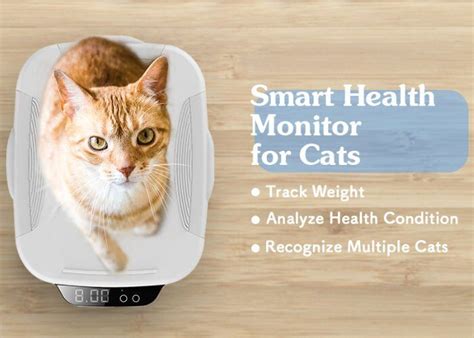Introduction
As a responsible cat owner, you want to ensure your feline friend lives a long, healthy, and happy life. Two crucial aspects of feline health are monitoring and nutrition. In this comprehensive guide, we’ll delve into the essential steps of monitoring your cat’s health and providing them with optimal nutrition to thrive in the years ahead.

Monitoring Your Cat’s Health
1. Daily Observations
Observing your cat daily is an effective way to spot any subtle changes in their behavior or appearance.
- Behavior: Is your cat eating, drinking, and using the litter box normally? Any changes in appetite, thirst, or elimination habits could indicate an underlying health issue.
- Appearance: Check your cat’s coat, skin, eyes, and ears regularly. Look for any signs of matting, lumps, discharge, or redness. These could be symptoms of parasites, allergies, or infections.
2. Regular Veterinary Checkups
According to the American Veterinary Medical Association (AVMA), regular veterinary checkups are essential for maintaining your cat’s health.
- Annual Checkups: Schedule yearly checkups for your cat, starting at six months of age. These exams typically include a physical examination, vaccinations, and a discussion of any concerns.
- Senior Checkups: Cats over seven years old should have twice-yearly checkups to monitor for age-related health conditions.
3. Monitoring Vital Signs
Monitoring your cat’s vital signs can help you detect potential health issues early on.
- Temperature: A cat’s normal temperature ranges from 100.5°F to 102.5°F. Use a rectal thermometer to check your cat’s temperature if you suspect a fever or hypothermia.
- Heart Rate: A healthy cat’s heart rate is between 120 and 140 beats per minute. Count your cat’s heart rate by placing your ear against their chest.
- Respiratory Rate: A cat’s normal respiratory rate is between 15 and 30 breaths per minute. Observe your cat’s breathing while they’re at rest.
Feline Nutrition
1. Understanding Your Cat’s Nutritional Needs
Understanding your cat’s nutritional requirements is crucial for their health and well-being.
- Obligate Carnivores: Cats are obligate carnivores, meaning they must consume animal-based protein to meet their nutritional needs.
- Macronutrients: Macronutrients include protein, fats, and carbohydrates. Cats require high levels of protein and moderate amounts of fat. They can tolerate small amounts of carbohydrates.
- Micronutrients: Micronutrients include vitamins, minerals, and enzymes. Cats need a balanced intake of micronutrients to support overall health.
2. Choosing the Right Cat Food
Selecting the right cat food is essential for providing your feline friend with the necessary nutrients.
- Wet Food vs. Dry Food: Wet food typically contains more moisture and protein than dry food. Dry food, on the other hand, is more convenient and affordable.
- Commercial Cat Food: Commercial cat foods are formulated to meet the nutritional requirements of cats. Choose high-quality cat food that is free of artificial additives and fillers.
- Prescription Diets: Your veterinarian may recommend a prescription diet if your cat has a specific health condition.
3. Feeding Your Cat
Establish a regular feeding schedule for your cat to maintain their digestive health.
- Feeding Frequency: Adult cats should be fed twice a day, while kittens require more frequent feedings.
- Portion Control: Follow the feeding guidelines on your cat’s food package. Overfeeding can lead to obesity and other health problems.
- Mealtime Environment: Feed your cat in a quiet, stress-free environment to promote healthy eating habits.
Common Mistakes to Avoid
To ensure your cat’s optimal health, avoid these common mistakes:
- Ignoring Warning Signs: Never ignore changes in your cat’s behavior or appearance. Seek veterinary attention if you notice any concerns.
- Skipping Veterinary Checkups: Regular veterinary checkups are essential for early detection and treatment of health issues.
- Overfeeding: Overfeeding can lead to obesity, heart disease, and other complications.
- Feeding Table Scraps: Table scraps are often high in fat, salt, and artificial ingredients that can be harmful to cats.
- Using Human Medications: Never give your cat human medications without consulting your veterinarian first.
FAQs
1. How often should I take my cat to the vet?
Annual checkups are recommended for cats starting at six months of age. Senior cats over seven years old should have twice-yearly checkups.
2. What are the signs of a sick cat?
Signs of a sick cat include: changes in appetite, thirst, or elimination habits, lethargy, vomiting, diarrhea, coughing, sneezing, discharge from the eyes or nose, and difficulty breathing.
3. What type of cat food is best?
Choose high-quality commercial cat food that is tailored to your cat’s age and health status. Avoid foods with artificial additives and fillers.
4. How much should I feed my cat?
Follow the feeding guidelines on your cat’s food package. The amount you feed will depend on your cat’s age, size, and activity level.
Conclusion
By following the steps outlined in this guide, you can effectively monitor your cat’s health and provide them with optimal nutrition to support their well-being for years to come. Remember to observe your cat daily, schedule regular veterinary checkups, and feed them a balanced, high-quality diet. By working together with your veterinarian, you can ensure your feline friend lives a happy, healthy, and fulfilling life.





















